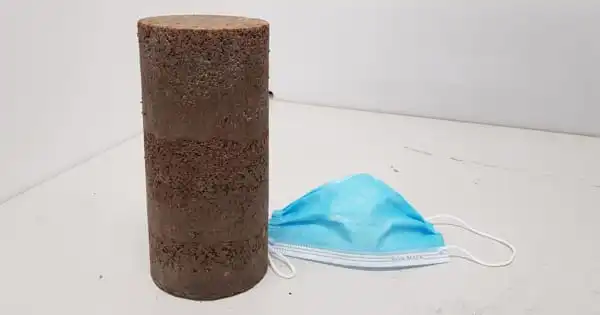The architectural environment of the Philippines consistently reflects the history and cultural background of the country, with its buildings and homes displaying a few influences from the countries that once traded with the island.
When we talk about the topic of Filipino architecture and dwellings, more often than not, we may think of the first known Filipino home: Bahay Kubo. The Bahay Kubo is a small hut comprising nipa, bamboo, and other indigenous materials. Although many people still chose to live in this form of home, the nipa hut concept has developed over time into a more contemporary building.
Many homeowners still intend to keep elements of traditional Filipino design in their homes despite advancements in building technology, the use of materials, and methods. To this end, they make deliberate choices to incorporate locally sourced materials, indigenous picks, and pieces showcasing the unmatched craftsmanship of its residents.
In this article, we will talk you through a handful of indigenous and locally sourced materials still used in Filipino architecture to this day.
Bamboo –
The use of bamboo as a construction material for both interior and exterior purposes remains just as relevant as it did in the days when the preferred style of habitation was simply Bahay Kubo. Homes in the province often employ furnishings such as bed frames, sofa sets, and tables comprised of bamboo, having the material stand the test of time with its versatility even in modern homes today.
Aside from its versatility within modern homes for interior furnishing, a focus on building homes with bamboo is resurfacing once again, as homes constructed from the material have been proven to be safer than concrete and steel in withstanding extreme climate conditions, namely earthquakes and typhoons, climate issues that are rife in the Philippines.
As well as bamboo’s durability factor, there is also a great reward that comes from locally sourcing materials. Since the economic disruption of supply chains during the global pandemic, the value of local production and value chains has been more so encouraged amongst consumers.
Several businesses in the Philippines have been adamant about raising more awareness of the beauty of using bamboo in modern home construction. Kawayan Collective aggregates, processes, and distributes beautiful, durable, Philippine bamboo as a sustainable construction material. They organize the collection and treatment of bamboo poles for construction grade quality that rivals cement block, steel, and imported building materials. Its mission is to elevate bamboo as a sustainable and durable building material to create better homes for all Filipinos.
Abaca –
Amongst the many wicker furniture styles available today, abaca may be one that many are unfamiliar with. Abaca, also known as Manila hemp, is one of the country’s 35 fiber crops and is considered the ‘strongest natural fiber in the world’.
The Philippines is responsible for supplying 87.5% of the world’s requirement for Abaca fiber, as such being the #1 supplier worldwide. Abaca has great economic importance and is harvested for its strong, versatile fiber that can be woven into home and fashion accessories.
Initially used as a material for rope, abaca made its way inside local homes as a durable, sustainable, and readily-available material for furniture that is easy for designers to work with. In its natural coloration, abaca furnishings exude an exotic air that is brought to the forefront in island-inspired interior settings. Abaca can often be found in resorts aiming to retain a traditional island feel as well as upscale homes.
Coconut Shells –
The Philippines is one of the top producers of coconuts and coconut products in the world, and every year, an estimated 9 billion husks are burned or discarded, which can take years to biodegrade. The continuous destruction of tropical forests has not only escalated climate change and biodiversity loss, but the limited availability of timber has also increased the prices of raw materials amidst its growing demand. Inversely, there are up to 21 million tonnes of unutilized coconut husks globally.
Coconut shell laminates are often considered on par with the quality and appearance of turquoise shells or ivory, however, more recently we have also seen them used as a building material. Coconut husks fibers have been used for more than a century in the Philippines, albeit on a local and small scale, involving products like ropes, nets, textiles, and other small artifacts.
Using the husk of the coconut as raw material, a team of Swiss and Filipino specialists at Naturloop have designed fiberboard, dubbed Cocoboard, that they hope will replace medium-density fiberboard typically used in housing projects. As the coconut husk is abundant for harvesting in the Philippines, the building material is also sustainable and affordable.
Naturloop has collaborated with The Hilti Foundation and Base Bahay in a social housing development to promote alternative technology in social housing construction in the Philippines.
Low and medium-density Cocoboard prototypes were trialed as wall cladding and ceiling panels in Tacloban, Philippines. After being used for an extensive period, the panels’ performance received positive feedback from users, and improvements have since been made.
Rattan –
Rattan is a member of the palm family, comprising solid wood with a fibrous heart, found in the Philippine dipterocarp forests and distributed throughout the country. Historically known as Malacca cane or Manila cane, rattan is known for being flexible and durable, with furniture being made from the material harboring characteristics of comfort, supplying a natural and tropical feel to its surroundings.
Its versatility takes on many wonderful curving forms and its light, golden color can easily brighten a room or outdoor environment. As a material, rattan is lightweight, borderline impervious, easy to move and handle, and able to withstand extreme conditions of humidity and temperature, with natural resistance to insects.
Due to these properties, rattan furniture is suitable for both indoors and outdoors, especially when utilized in Southeast Asia climates. An abundance of furniture sets made from natural and synthetic can be found on the market to suit all design preferences.
The materials and building methods listed above are just a handful of examples of how we can ensure that modern architecture and home design continue to pay homage to its former influence and roots.
In a country like the Philippines, where building advancements are being made at a rapid pace, especially in the metropolis areas of Metro Manila, let us not forget that the nation was once not one exclusively encompassing concrete structures. There is always beauty in retaining the touches of traditional Filipino design, no matter how advanced the future of the country’s cityscape may look.
















